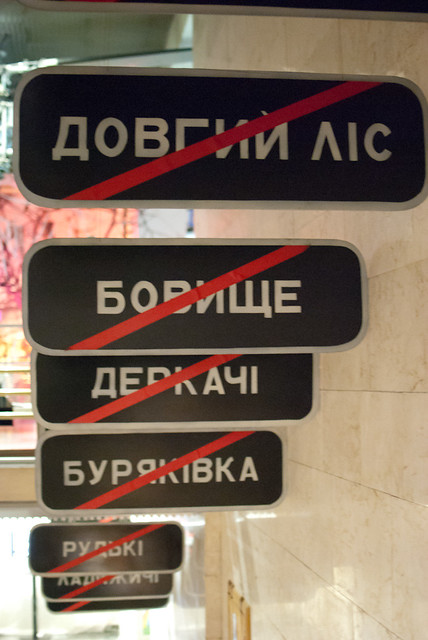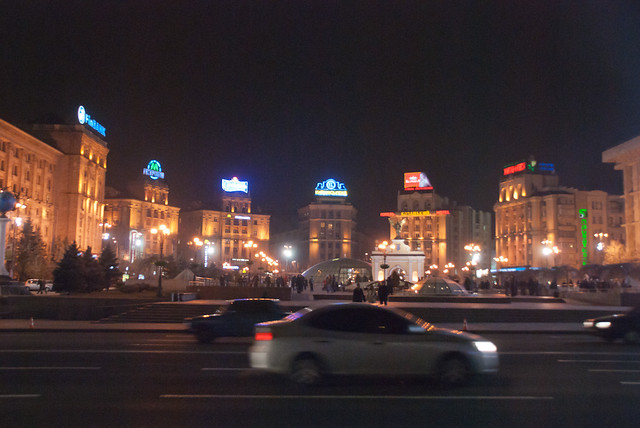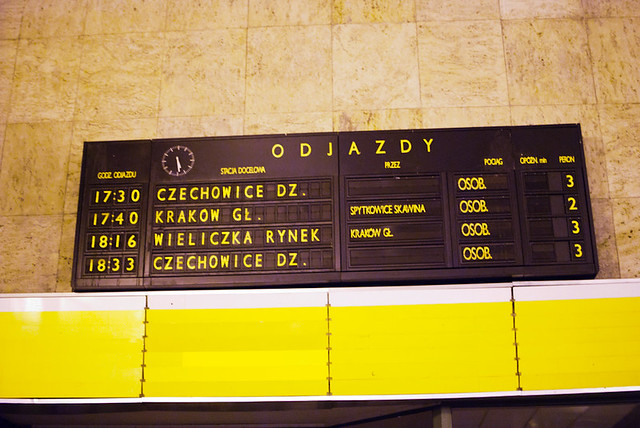The 2012 Amelia Island Chili Cookoff in Fernandina Beach featured 27 contestants to benefit the Amelia Island Montessori school.
The 2012 Amelia Island Chili Cookoff in Fernandina Beach featured 27 contestants to benefit the Amelia Island Montessori school.
Recycling ads is nothing new, especially when the focal point is one of the most enduringly positive concepts in America: a candidate’s mother. Notice how North Dakota Republican Rep. Rick Berg, who is running for Senate this year, copies an ad for former Democratic Minority Leader Delegate Ward Armstrong:
Rick Berg for Senate 2012:
Ward Armstrong for Delegate 2011:
 If you’re going to make an infographic that is 1,800 pixels high, you better have a really good reason. The Obama campaign, well-known for a keen graphic sense unseen in history, put out some facts on the birth control insurance mandate in the form of an infographic that requires five or six scrolls to get to the bottom. Click the reduced version at left to embiggen.
If you’re going to make an infographic that is 1,800 pixels high, you better have a really good reason. The Obama campaign, well-known for a keen graphic sense unseen in history, put out some facts on the birth control insurance mandate in the form of an infographic that requires five or six scrolls to get to the bottom. Click the reduced version at left to embiggen.
The worst part? There are no maps or charts, even when the infographic tells of 28 states that have already passed contraceptive mandates. It’s an infographic, show it to me!
There are 12 bits of text scattered below 4 headers with a couple nifty design motifs that aren’t actually necessary, bathed in thousands of pixels of blank space, swimming in a depth of an astonishing 1,800 pixels. It would be hard to reduce the density of information conveyed in this “graphic” without giving it sovereign status. I shouldn’t have to work so hard to get facts from someone I believe in.
Not to pick on the Obama campaign (I will still be working fervently for his re-election), but this was just the latest example I saw today. I can’t be the only person who is perturbed by the proliferation of infographics that are 400 pixels wide and 10,000 pixels high. This sort of nonsense would never have survived in the print era because space was limited, so data density was important. Digital has freed us from the limitation of paper, but it hasn’t absolved us of our responsibility to be reasonable.
What they’ve done here is take a perfectly fine list of “12 Reasons for the Obama Contraception Plan” and explode it into something barely usable. I’m not even sure what the point of it is–if it’s to convince you to fill out a sign-up form for email updates, that form is right near the top…get all the way to the bottom, and you have to scroll back up to the top.
I’m not a designer or artist by trade (of course not, I haven’t found the time to do a decent website design), but I do consume information and enjoy trying to translate quantitative data into useful visuals. I’ve prepared a compressed version of the above that requires no scrolling, and recategorizes the factoids into two categories:
See? Same information, much higher data density.
I hope more talented designers than I will take note: when it comes to visualizing data, form follows function. Please, for the love of God, stop making us scroll more than we have to.
You have probably seen Rep. Pete Hoekstra’s horrifically racist Super Bowl ad, featuring an Asian woman speaking broken English while riding through her rice paddy with a conical hat:
I’m a native-born Chinese American. Odious scumbags like Rep. Pete Hoekstra and his daft team make my blood boil hotter than lava.
I’m not going to spend too much time explaining the blatant in-your-face racism of this ad, it’s self-evident. This ad is the most visible and obvious example of a dangerous trend that Republicans and even some Democrats have embraced in recent cycles: casting Chinese people and culture as the Other to be feared.
Remember Jesse Helms’ infamous Black Hands ad? It was enough to use the simple imagery of a pair of white hands to intone darkly that African-Americans were taking the jobs of Whites. With China-bashing, they don’t even have to try for such subtlety.
This ad is a symptom of two threads of thought weaving themselves into a crazy quilt of racist imagery:
1) Chinese stereotypes, culture, and language as a shortcut for the Chinese economy and government -With only 30 seconds in an ad, it’s much easier to preach fear of Chinese faces and culture than the Communist government, or economic forces. Hence the conical hats, rice paddies, gongs, and dragon dances.
2) Chinese faces as the Other, separate and apart from “American” faces – These ads always show happy Chinese faces taking jobs away from Americans, exploiting hidden a hidden sentiment that Chinese-Americans and other immigrant groups are simply not accepted as standard. That’s why Senator George Allen tried to point out a native-born “macaca” as a foreigner in 2006: it’s easy to keep castigating groups into permanent outsider status.
There are ways to discuss trade and debt with regards to China without dipping into the vast and unending pool of racist imagery, a test that many recent campaigns have failed. Instead, politicians like Pete Hoekstra stoke fear of Chinese people and culture itself. I’ll explain each point below the fold.
I’m heartened by the Black ministers who have joined in condemning this ad, because we don’t have to explain to our fellow minority groups that it all comes from the same strategy: instill fear in the voter of Others taking their jobs and livelihoods.
It is a material fact that many manufacturing jobs have left America for cheaper pastures like China. The causes for this are complex, and involve the mechanics of capitalism seeking cheap labor and trade policy.
It is not because Chinese people look different than white people, speak broken English, and do silly dragon dances. This bullshit has to stop.
1) Chinese stereotypes, culture, and language as a shortcut for the Chinese economy and government. It shouldn’t be hard to run against the Chinese Communist government. From its well-documented human rights abuses, to the quashing of pro-democracy movements, up through widespread corruption and class inequality, the modern Chinese government provides a rich trove of attacks. It is, however, much easier to visually attack the Chinese people.
The Chinese language itself becomes a fear intensifier, like in this 2010 spot from Citizens Against Government Waste. Look at all those Chinese people laughing at our misfortune!
Take now-Congressman Mark Amodei’s ad, where in heavily accented English a fake Chinese news reader reports on Chinese troops marching on the Capitol. It says hardly anything of susbtance, instead relying on a helter-skelter spray of Chinese characters and sounds to scare voters with their foreign-ness.
It’s about as complex as jumping out from under the bed and screaming “BOOGA BOOGA CHING CHONG”. Amodei’s ad plays almost like aversion therapy to a Chinese takeover, stitching together words and sounds to stoke primal fear instead of intellectual thought.
2) Chinese faces as the Other, separate and apart from “American” faces
Hoekstra and company get away with this because even though Chinese-Americans have inhabited our fair nation for well over a century, Asians have never shaken off the “foreigner” image. The most offensive part of this ad is how Republicans think it’s entirely believable that a girl who speaks perfectly unaccented English could speak with broken grammar. Hoekstra’s defense was that the the parents of the actress are “100% Chinese!” It’s believable because…well, look, she looks foreign!
While most of the overt racism comes from Republicans, my fellow Democrats are guilty of this also. Before anyone tries to say that simply bashing Chinese culture in campaign ads doesn’t harm Chinese-Americans, I’ll remind you that former Rep. Zack Space ran an ad in 2010 using footage of a Chinese New Year celebration in San Francisco to stand in for Chinese people celebrating the theft of Ohio jobs:
It is deliberately scripted so that crowds of happy, smiling yellow faces are celebrating taking jobs away from a (white) Ohio worker! Look at all those yellow people basking in their joy. That’s called racism, implying that the faces and traditions of those pesky yellow people are succeeding at the expense of good white people.
Notice how this contrasts with the approach that Indiana Rep. Joe Donnelly took in his ad on China:
While like most campaign ads, it’s short on actual policy, it expresses the point that Donnelly wants to protect American jobs without resorting to contrasting happy yellow people with sad white people. It avoids gongs and Oriental-sounding music, it avoids Communist troops marching in lockstep. That’s called politics, which is not racist.
There’s no counterbalance to this trope. Asians are rarely, if ever portrayed in campaign ads as “Americans”. In most Congressional districts there aren’t enough Asians to bother including one. Instead, when jobs are being shipped overseas, Chinese faces are always shown to be the winners, and white Americans the losers. Asians are always and forever the “other” to be feared and loathed in this situation.
It’s not just in campaign ads. It comes from children on the school bus asking Asian kids if they were born in America, but not white kids. It comes from playground knuckleheads who want the class Chinese kid to speak Chinese because it sounds funny, and laugh because their last names are so short and funny. Remember the Texas lawmaker that suggested Asians adopt easier names to simplify voter registration?
It comes from people asking “but where are you really from?” when they won’t take “Virginia” for an answer. It comes from the man who asked me at Shad Planking a few years ago what I thought of American culture. These atomized interaction ranging from overt racism to innocent misunderstandings don’t happen in a vacuum separate and distinct from our political discourse, and racist tools like Rep. Hoekstra don’t make life any easier.
Pete Hoekstra and his racist allies deserve no sympathy for the flogging they so richly deserve, but this problem won’t solve itself. It won’t solve itself until people look at Asian faces and believe that they could be born Americans by default. It won’t solve itself until Asian faces become “normal American,” instead of the Other to fear.
Hoekstra will learn not to be so overt, but we must remain vigilant to fight what comes next.
My train from Krakow to Kiev clattered through the vast and endless countryside through the night, stopping for an interminable customs stop while Ukrainian authorities sent two separate round of sniffer dogs through our belongings. I had traveled all the way to Ukraine to fulfill a lifelong dream–to see firsthand the abandoned town of Pripyat, deserted after the Chernobyl disaster. A town abandoned in one day, and left virtually untouched in the decades since. National Geographic wasn’t going to cut it. Sadly, the morning I arrived in Kiev, the Ukrainian government halted all tours of the area, effective immediately. (I did manage to get my money back.)
I visited the museum, but it isn’t quite the same.

Newlywed couples place locks on bridges all over Kiev, Ukraine to symbolize their union. Periodically some hapless bastard has to clear them off with a bolt-cutter to make room.

Village signs from the Chernobyl exclusion zone

Independence Square, site of the Orange Revolution
In 1932 and 1933, famine struck the Soviet Union. Ukraine was affected far more than the other Soviet republics. As one of the Soviet Union’s breadbaskets, food supplies were taken from Ukraine to provide one third of the entire Union’s supply. The Holodomor, as it is known, killed millions and remains a sensitive spot in Ukrainian history. A candlelight vigil was underway at the memorial when I visited.
Krakow is one of the most fascinating places I have ever seen, where the ancient clashes with the slick. The food is cheap, the beer is decent, and the vodka flows freely. What’s not to like?
It was foggy when I arrived in Krakow. It was early in the morning, and the streets were empty. Krakow gets livelier once everyone wakes up.
If the first moments in Krakow after you get off the platform at the main train station are any indication, Poland is doing its best to outgrow its tragic history of partitions, re-partitions, and Communism. From the platform you walk into Galleria Krakowska, a slick shopping mall where they were playing Ke$ha over the PA system when I walked in.
Good God, you can’t escape her.
Despite this, history is everywhere in Krakow, from its beautifully preserved stare miasto (Old City) to sites further afield.
Two hours away by train is Oświęcim, home of the Auschwitz concentration camp. The scale of it cannot be conveyed in photos. Little can be written about the site that does it justice.

Remains of gas chamber #4 which was destroyed in a prisoner revolt
It was the most sobering tour I ever did.

Departure board at Oświęcim station
Polish railways are a mishmash of sparkling-new high speed trains on electrified tracks and creaky coaches rattling back and forth until their wheels give out–it all depends on where you are.
When I sat down for this plate of pierogi (the Polish dumpling*), a friendly Pole speaking flawless English sitting across the table asked where I had come from. Poles were immensely curious as a whole, and every day a few of them would come over to chat me up.
He made his living exporting Polish labor to foreign construction sites (with the unspoken second half–Polish workers getting followed by their families into the new country). I asked him for some tips on what to eat.
“Are you looking for typical Polish food?”
Well, yeah, I had come all this way.
He paused for a second and answered “Pork chops. Fried pork chops.” He scribbled down kotlet schabowy on a piece of paper, along with vodka recommendations.

I took his word for it. The pork chop itself is on the upper right, this photo was taken to emphasize sheer volume of the potatoes.
“It’s like a religion. Every Polish family has to eat it at least once a week.”
Before we finished our lunches, he remarked that everyone needed a sense of humor (tragic history or not) and told a Polish joke. I don’t remember what it was, but I asked him if he had heard of Polandball.
He had not. I told him to Google it, and we parted ways. I hope I made his day.

Departure board at Kraków Główny railway station
On the departure board is a train to Wieliczka, home of the one of the world’s oldest continuously operating salt mines. The Wieliczka Salt Mines are a UNESCO World Heritage Site. Miners not only excavated salt rock, they carved statues and even entire statues in the mine.

King Kazimierz III Wielki (the Great) in rock salt
After descending over 300 steps, visitors are shown only 1% of the full mine. Tour guides will tell you that it is not expressly forbidden to lick the walls–they’ll also note that virtually nothing can grow on salt rock.
I licked the wall. It was salty.
Poles are devout Catholics, and working in an underground salt mine will make you want to pray extra hard. Chapels small and large were carved into the rock salt, including a huge chapel with rock salt renditions of the Last Supper, Jesus on the cross, and chandeliers made of crystal-clear halite. You can rent it out for weddings, if you’d like.

Zurek – sour rye soup. This stuff was addicting.
*I can hear you, Megan. “Dumpling” is for sake of explanation.
“A symphony must be like the world. It must contain everything.” – Gustav Mahler
I’m spending Thanksgiving in Krakow, but I am blogging a few days behind. So here’s Vienna.

Gustav Mahler in the Vienna Museum of Sound
There is not enough time in the world to soak yourself in the high culture of Vienna’s art and music. For centuries, the greatest minds in classical music, from Mozart to Beethoven to Strauss and and Schoenberg came to Vienna to compose and perform their works.
Art museums of all kinds dot the city. I saw two museums in one day and was almost knocked dead with culture.

Wiener Schnitzel, a breaded and tenderized veal cutlet
I didn’t come to Vienna to look for any of those composers though. I came to look for the greatest composer that ever lived–Gustav Mahler. His output is small compared to the other greats, a set of symphonies and some song, but within those works lies the whole world. He described himself as “thrice homeless, as a native of Bohemia in Austria, as an Austrian among Germans, as a Jew throughout the world—always an intruder, never welcomed.”
His symphonies were epic in size and scope, and broke the limits of what was known at the time. There were no small works from Mahler, no trite sonatas or pleasant quartets. Every work was an expansive exploration that tried to span the entire range of human emotion. It is the Sixth Symphony, the “Tragic”, that has always been my favorite. In the final movement, three hammer blows crush the hero into bleak nihilism, relevant today as we face an uncertain world. His life was constant struggle, and it shows in his work.
“I am hitting my head against the walls, but the walls are giving way.” – Gustav Mahler
Go big, or go home. In Mahler’s work, the listener is alternately drained and inspired. It is the soundtrack of my life.
I won’t waste any more words trying to write about his music, go look it up yourself. Writing about music is like photographing a sculpture, it will never convey the true nature of the work.
Mahler is buried in Grinzig Cemetery on the outskirts of Vienna. As is Jewish tradition, pebbles left by visitors line the top of his headstone.



I stared out the train window as it passed through the Austrian countryside that inspired his greatest work. Perhaps he knew while alive, deep down, that a century after his death people from continents away would come just to leave a single stone.
“All that is not perfect down to the smallest detail is doomed to perish.” – Gustav Mahler